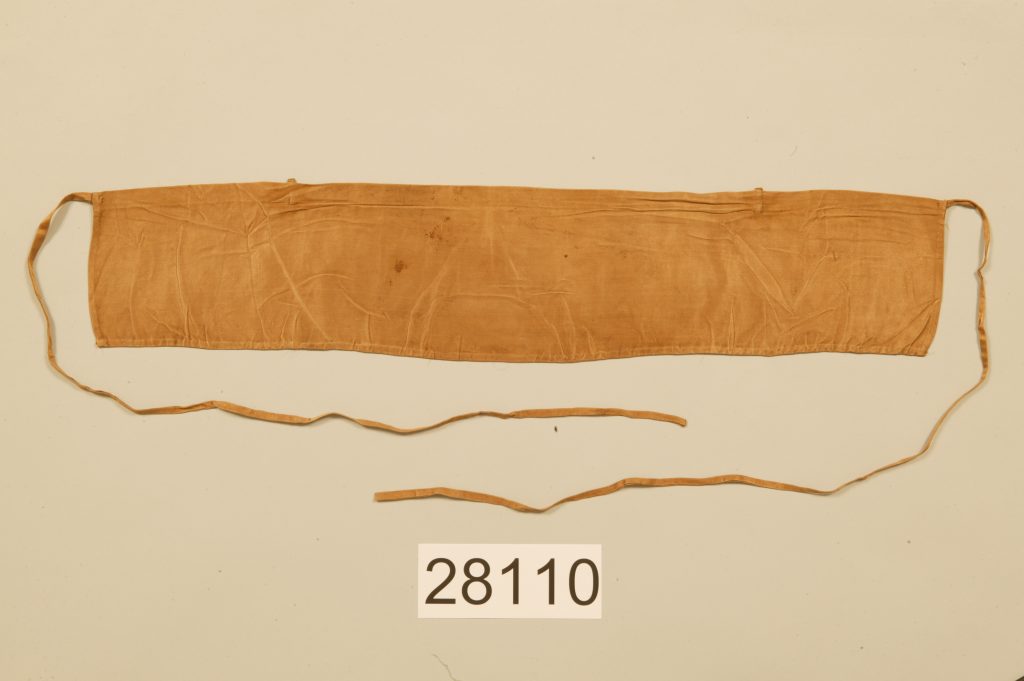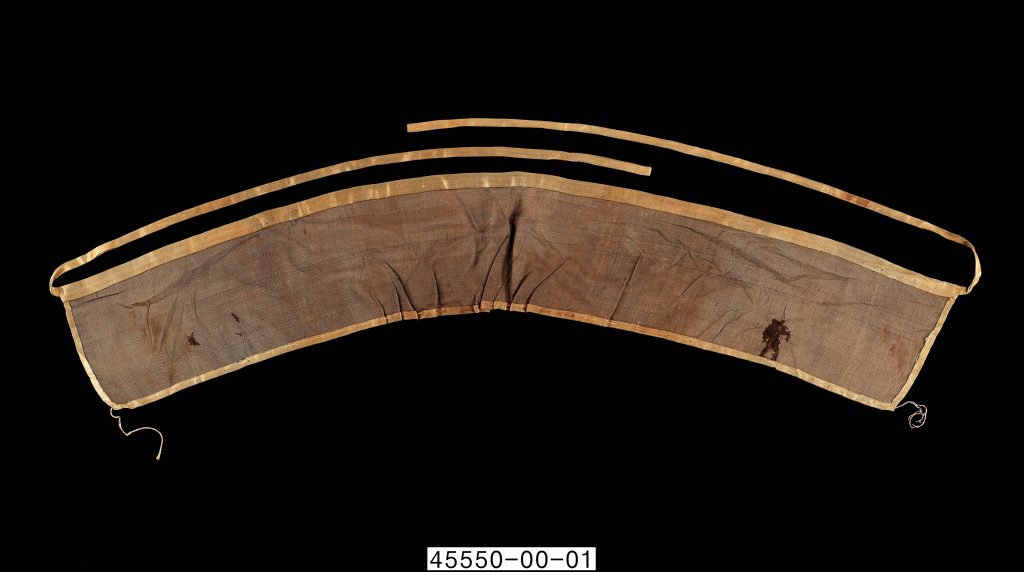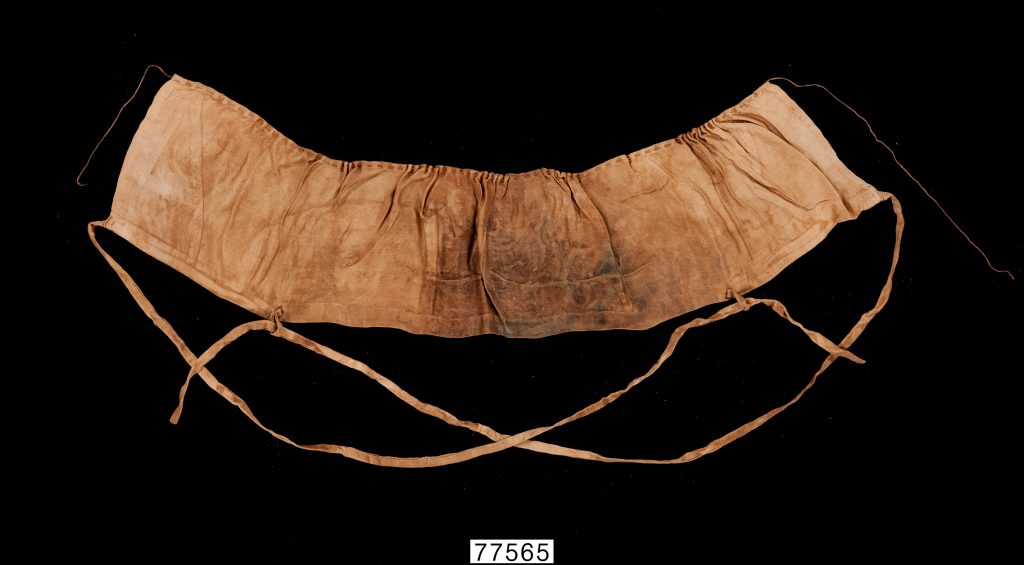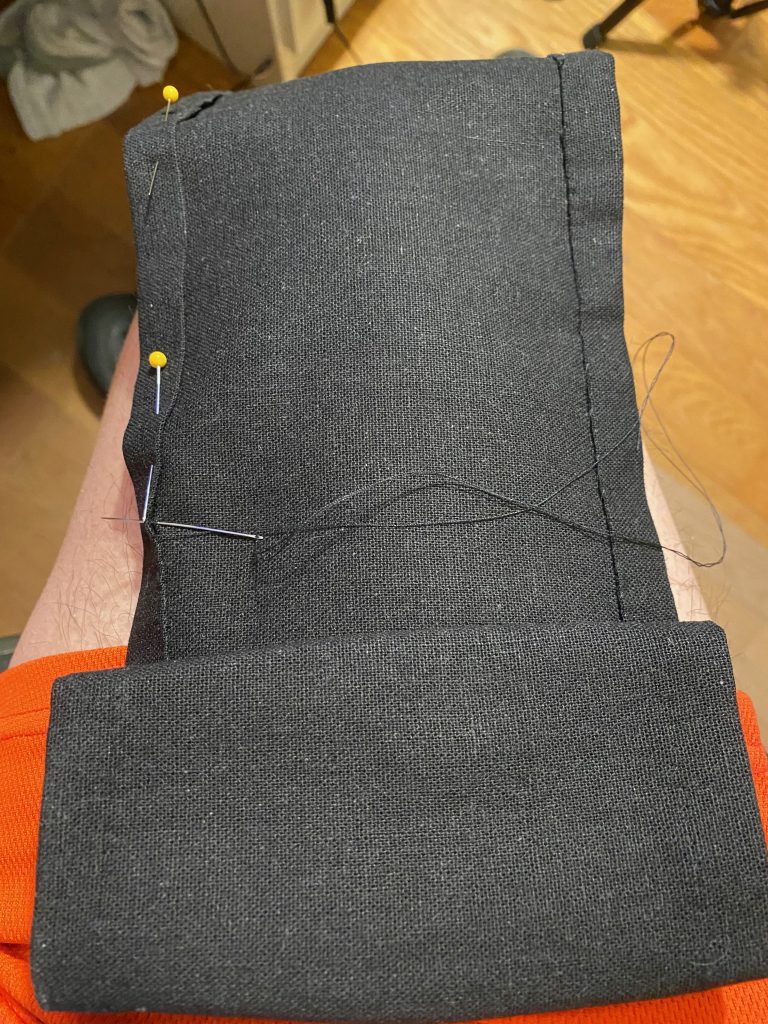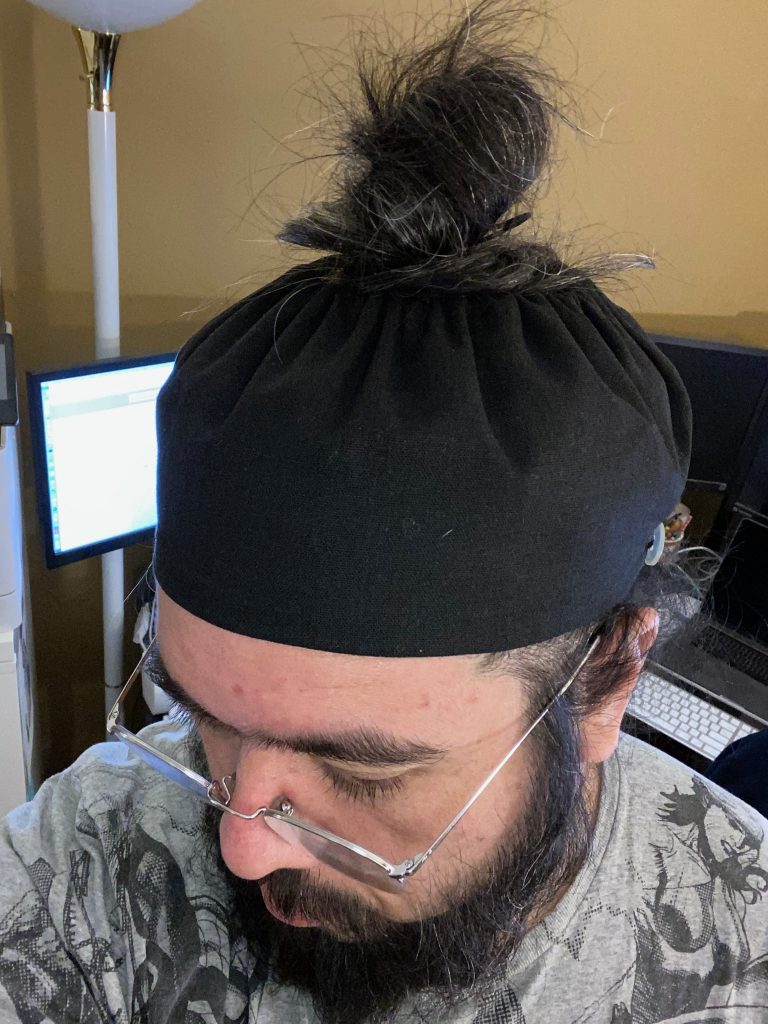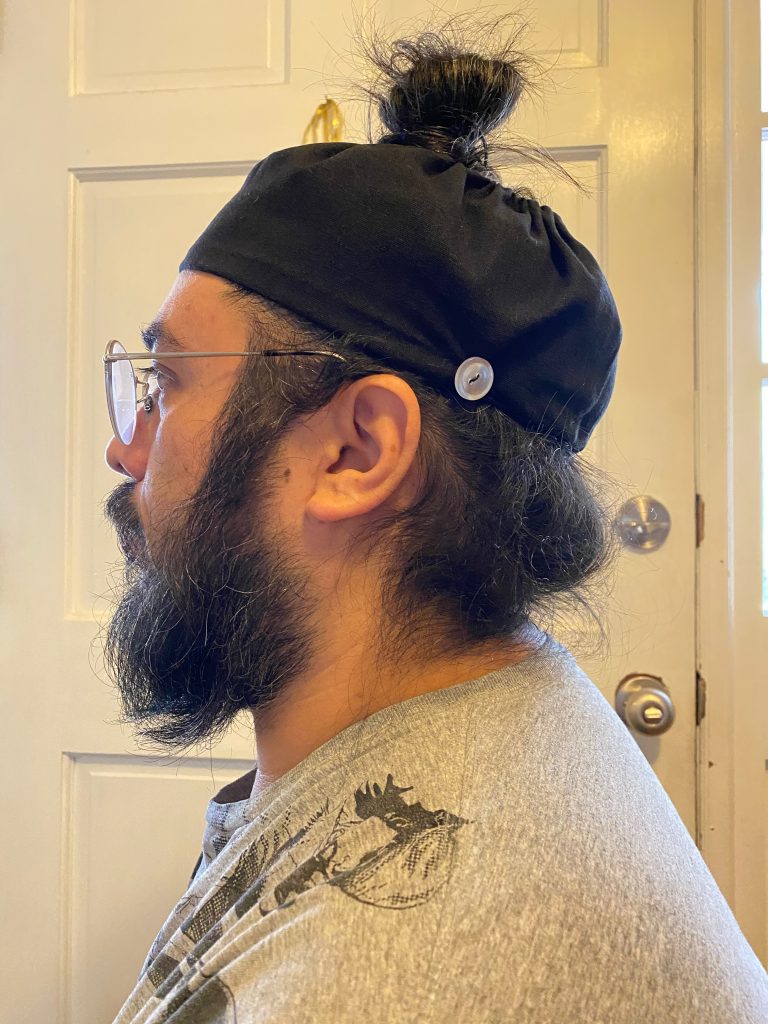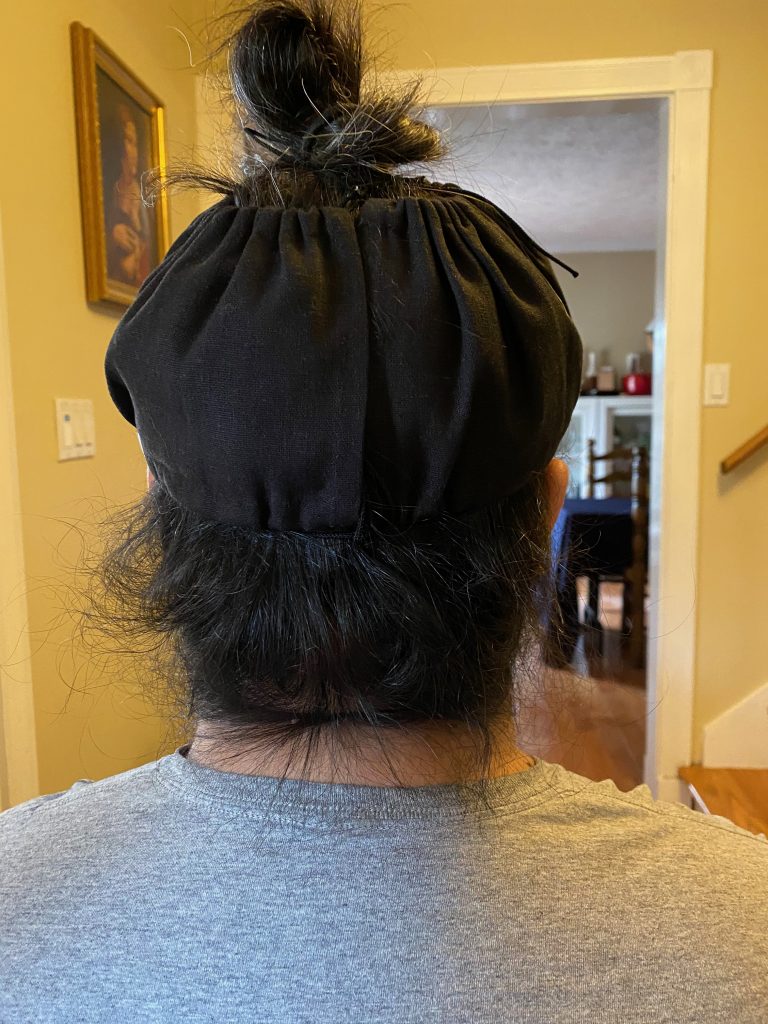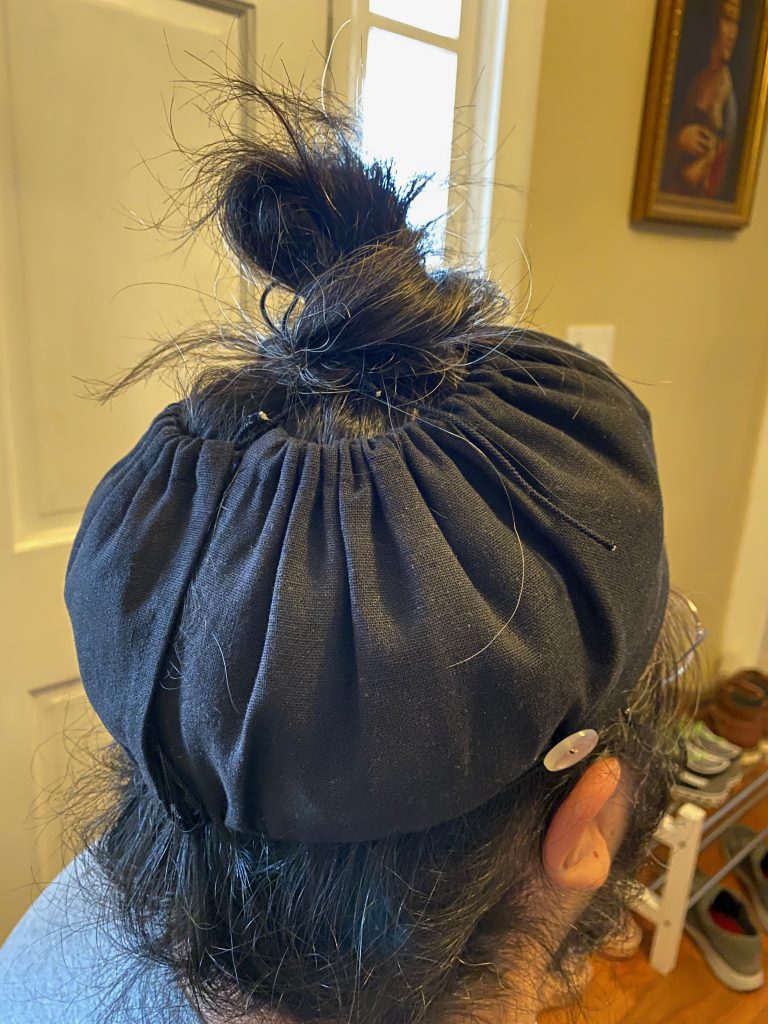One of the most distinctive parts of traditional Korean clothing is hats. There is a wide variety of hats for different classes and situations, but the most widely recognized Korean hat is probably the gat (갓).

Before getting into the gat, however, we must look at what is worn underneath it, which is a headband-like article called a manggeon (망건). It helps keep the hair in place when wearing it in the traditional topknot style. The manggeon is commonly seen in dramas as a narrow band made of woven horsehair, with a more see-through window in the center front:
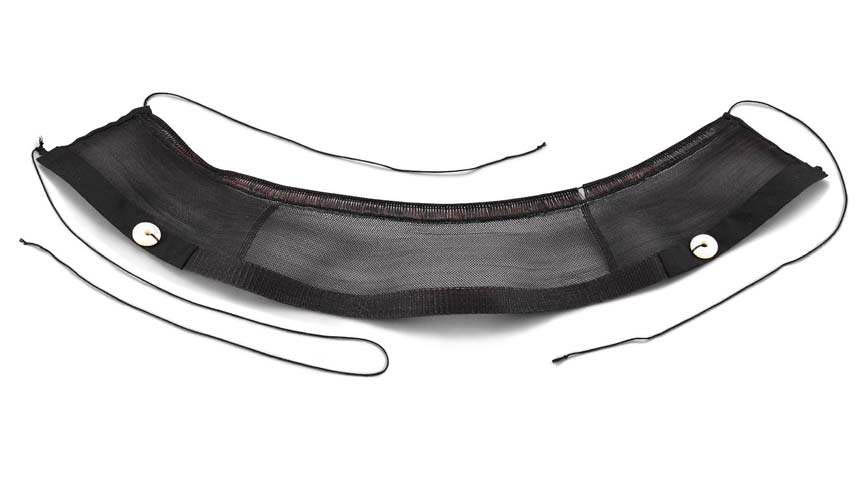
Here you can see the upper and lower ties used to secure the manggeon to the head, as well as the button-like ornaments (gwanja – 관자) on the sides that help secure the ties. As is often the case with Joseon clothing, however, it is important to look at specific dates when determining if the style you’re looking at falls within SCA period.
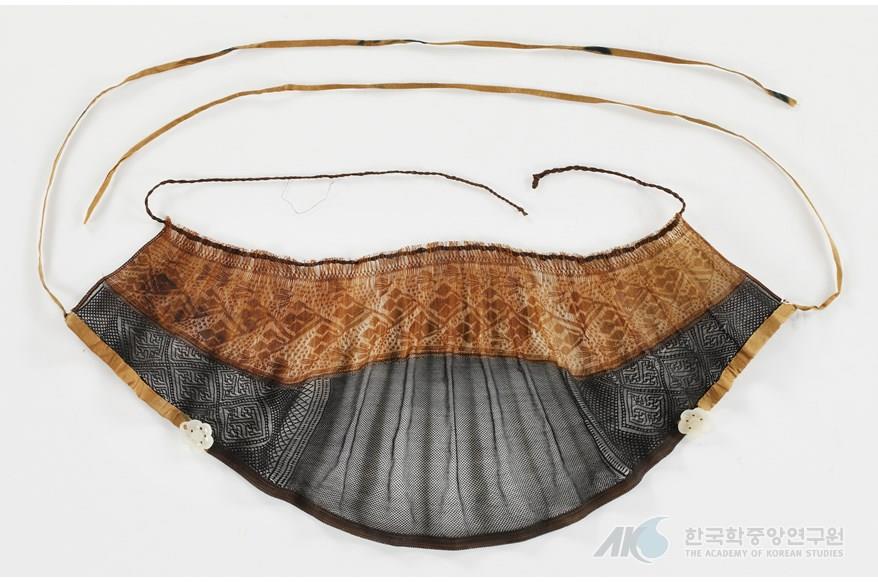
This tomb find dates to 1615, which is within a short distance of the time period we’re interested in. You can see many of the same features in this example: woven horsehair, upper and lower strings, and temple ornaments. The major difference is the overall shape and height. Yi Jeon was a member of the royal family, so the elaborate weaving and red horsehair section are unusually extravagant.
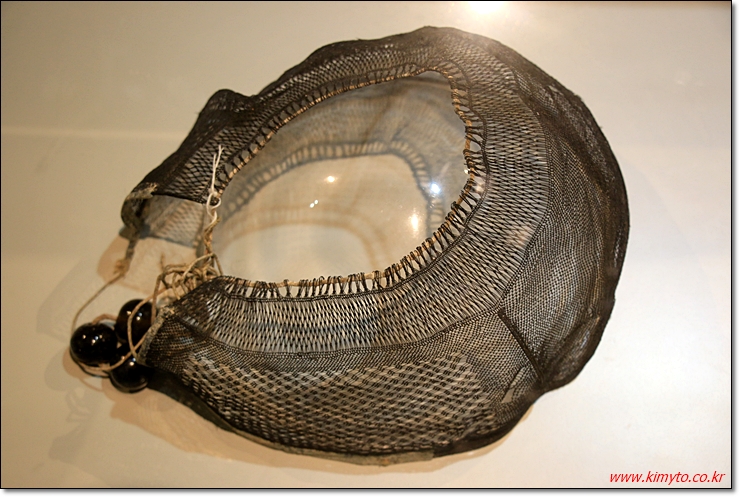
A similarly shaped manggeon was found in the tomb of an official named Choi Gyeong Seon. Again, it covers a larger amount of the head than the later headband style manggeon. It is less elaborate than Yi Jeon’s, but still displays impressive craftsmanship.
In a paper from Seoul Women’s University describing the tomb find, the authors provide this analysis of Choi Gyeong Seon’s manggeon (Google translation):
… it is a good resource to know the shape and shape of a man’s head in the early 17th century as he wears a manggun made of horsehair … In particular, this is the first case of wearing a horsehair [manggeon].
This seems to imply that the horsehair manggeon is either relatively new in the early 17th century, or that there are no previous extant examples. In either case, it may be useful to delve further back into the origin of the manggeon.
The Encyclopedia of Korean Folklore Culture says this about the manggeon (Google translation):
Manggun originally originated in the Ming Dynasty and was made of silk. However, as it entered the Joseon dynasty, the material was changed to horsehair instead of silk, and the shape was simplified and recreated in the Joseon style. In Joseon, horsehair, a material for mangeon, was collected from Jeju-do or Pyeongan-do, where there were many horse ranches. … Through the relics unearthed from the tomb of [Yi Jeon] (1599~1615) … the form of the Chinese mangan can be confirmed.
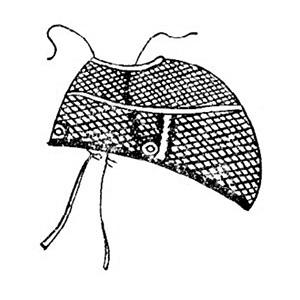
The Chinese ancestor of the manggeon is called wangjin. These are typically made as a net of silk thread, and share the same shape and features as the early manggeon.
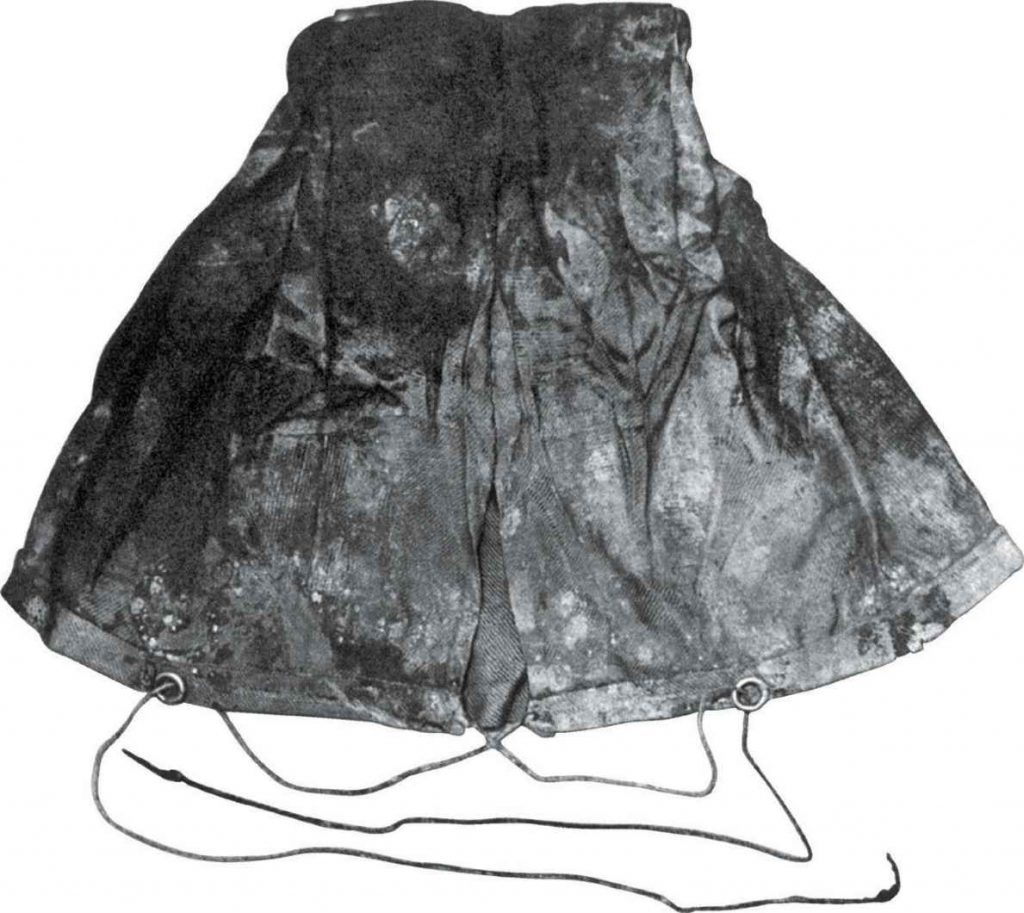
Some wangjin are made from silk cloth, though it doesn’t seem to be the most common form. People of all social classes are depicted wearing the net style wangjin. However, from a reconstruction standpoint cloth gives me an easier starting point. There are also extant 18th century manggeon that are made from straight strips of fabric:
Given all of these examples, my first attempt at a passable manggeon is made from a linen rectangle with casings for drawstrings at the top and bottom:
The lower strings are looped around the gwanja and then tied at the back of the head. This causes the edges of the manggeon to overlap and cover any gap. Some instructions say to then tie these strings around the topknot. I cinched up the top edge with the upper string and then tied those ends around my topknot, again causing the edges to overlap.
This is a usable first attempt, but I already have plans to change it based on looking at more examples. Rather than casings with drawstrings (which are not really seen in a Korean context), I would replace the lower string with narrow strips of fabric attached to the corners and run the upper string through the fabric at the top like a large running stitch as seen in the 18c examples. This method of running drawstrings is also seen in extant pouches.
Rough as it is, this first try does the job of covering my hair and providing a comfortable surface to wear my hat:
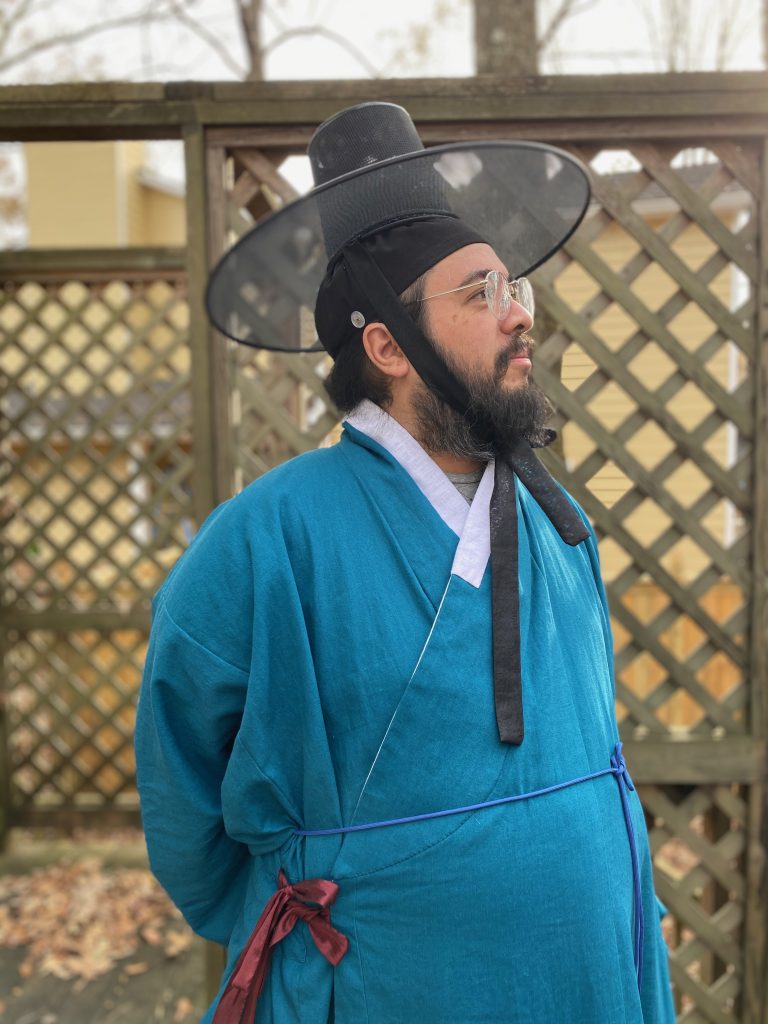
Seong Myeong Su Daegam provided a large amount of research and translation help with this outfit.

